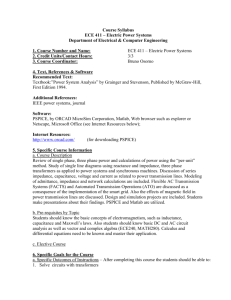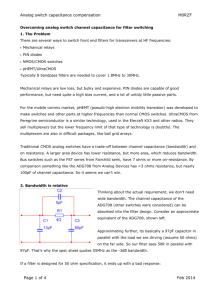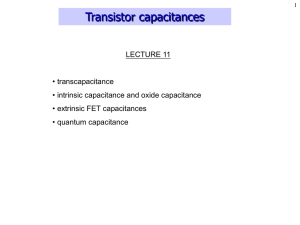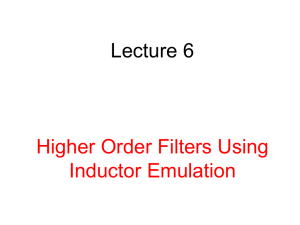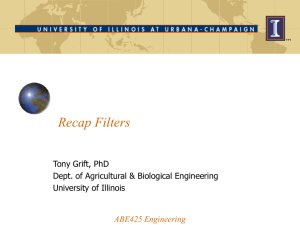MiniProject #3: Filters and Networks
advertisement
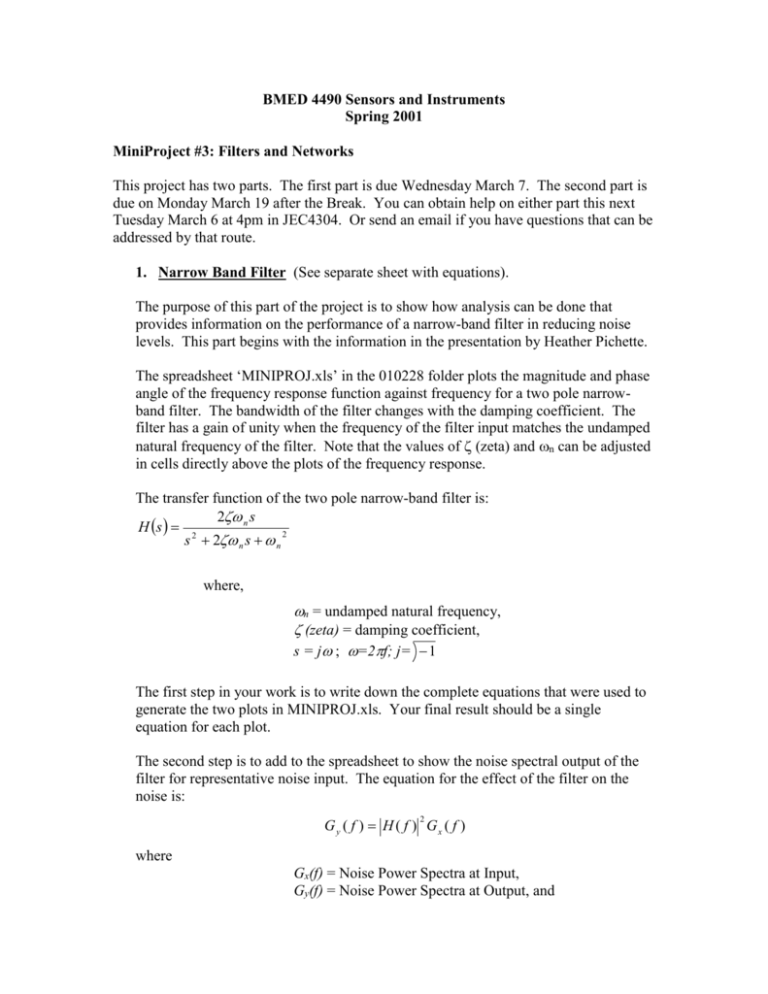
BMED 4490 Sensors and Instruments Spring 2001 MiniProject #3: Filters and Networks This project has two parts. The first part is due Wednesday March 7. The second part is due on Monday March 19 after the Break. You can obtain help on either part this next Tuesday March 6 at 4pm in JEC4304. Or send an email if you have questions that can be addressed by that route. 1. Narrow Band Filter (See separate sheet with equations). The purpose of this part of the project is to show how analysis can be done that provides information on the performance of a narrow-band filter in reducing noise levels. This part begins with the information in the presentation by Heather Pichette. The spreadsheet ‘MINIPROJ.xls’ in the 010228 folder plots the magnitude and phase angle of the frequency response function against frequency for a two pole narrowband filter. The bandwidth of the filter changes with the damping coefficient. The filter has a gain of unity when the frequency of the filter input matches the undamped natural frequency of the filter. Note that the values of (zeta) and n can be adjusted in cells directly above the plots of the frequency response. The transfer function of the two pole narrow-band filter is: 2 n s H s 2 2 s 2 n s n where, n = undamped natural frequency, (zeta) = damping coefficient, s = j ; =2f; j= 1 The first step in your work is to write down the complete equations that were used to generate the two plots in MINIPROJ.xls. Your final result should be a single equation for each plot. The second step is to add to the spreadsheet to show the noise spectral output of the filter for representative noise input. The equation for the effect of the filter on the noise is: G y ( f ) H ( f ) Gx ( f ) 2 where Gx(f) = Noise Power Spectra at Input, Gy(f) = Noise Power Spectra at Output, and 2 H ( f ) = Magnitude squared of the filter frequency response function For present purposes to illustrate the effect of the filter on noise, please use the following representation for the Noise Power Spectra at the input. Gx ( f ) 1 2 aj 1 where, “a” is A Noise Bandwidth Parameter. A representative value for “a” is (2*2*104)-1. This equation shows the noise that would be seen if very broadband white noise (e.g. electron motion due to thermal influences) was low-pass filtered by an electronic circuit. Your addition to the spreadsheet should result in a plot of Gy(f) in which a is an adjustable parameter, located in a spreadsheet cell directly above the plot. 2. Resistance Estimates This part of the project is concerned with using impedance information to determine equivalent circuit components for elements in the glove safety instrument design. Starting with Dan Casimiro’s presentation (slide 3), we can find the resistance and capacitance equivalents for the surgeon’s skin. To quote from Dan’s PowerPoint: At a minimum, the surgeon’s impedance due to his skin is approximately 200 k at 1 Hz and 200 at 1 MHz The skin is modeled to a first order representation as parallel resistance and capacitance, as shown to the left. The impedance is given by: Z ( s) R ; where s=j; =2f sRC 1 (1) In this instance, when is very small, Z=R. Therefore, as a first approximation, R is 200K. Equation (1) above is then solved for C at a frequency of 1MHz. To do this we work with the magnitude of Z, which is 200 at 1MHz. The magnitude of the numerator of equation (1) is just R. The magnitude of the denominator of equation (1) is (CR) 2 . The calculation should yield a value for C of 8*10-10 f. Please check to see if you obtain the same value. The same approach can be applied to the spreadsheet ‘glove data.xls’, which contains information about impedance under a variety of experimental measurement conditions. The starting point is equation (1), which shows the relationship of impedance to resistance, capacitance and frequency. The remainder of project is to obtain numerical values for the glove hole resistance and glove capacitance, with adjustment for the multimeter impedance and for that of the rest of the circuit. The approach described here builds upon the presentation by Jean Riedell. The column in the spreadsheet labeled SG volt (signal generator voltage) is for the circuit shown below. We see that the Multimeter is able to read a result of 6 volts from 20Hz to 20KHz. Next we look at Z1=inf, in which case the circuit includes the series resistor of 1M as follows. There is no glove, just the multimeter with its internal resistance and capacitance. The capacitance CMM may also include capacitance of the wiring to the multimeter. For this arrangement, the data shows 5.3 volts at low frequencies, and we ignore the capacitance at low frequencies, as a first approximation. The voltage divider has 6 volts from the signal generator and 5.3 volts across the Multimeter. What is the resistance RMM? The answer is 7.6 M. Please check to see if you obtain the same answer. The next step is to find the capacitance CMM. At a frequency of 2KHz and Z1=inf, the Multimeter reads 4 volts. The voltage divider impedance relationship is shown in equation (2). The brackets are present to show that we are looking just at magnitudes of the complex impedance, although the equation without brackets and including phase applies as well. In equation (2), ZMM is the impedance of the Multimeter. This equation has only one unknown, which is C and the equation can be solved for C. What is the value of C? VMM 10 6 6 VSG 10 Z MM (2) The spreadsheet column labeled Z1no hole shows what happens when the glove is present and its capacitance CG is in parallel with CMM. Since parallel capacitances add, the previous procedure for calculation of capacitance can be repeated, but now with a voltage of 1.2 volts. The calculated capacitance is the sum of the parallel capacitances. What is CG? Finally, we have the hole present. The approach is similar to previous calculations, but not only is the glove capacitance present, the hole resistance is present. The hole is in parallel with RMM. What is the value of RMM? You could consider using any frequency between 20Hz and 2 KHz for the calculation. Note that at 20Hz, the glove capacitance appears to have an effect, albeit small, on impedance (or else our assumption of infinite resistance without a hole is only approximately correct). If you want to ignore this small effect, go ahead. For extra credit, you could check at more than one frequency to see if the result is similar at different frequencies. This Miniproject uses measurements of impedance magnitude only. It should be noted that Sarah Pluta’s presentation on Lissajous figures is the basis for measurement of impedance phase as well as magnitude, and would allow for simpler calculation in some instances, and for calculation in the presence of more complex circuit configurations.
